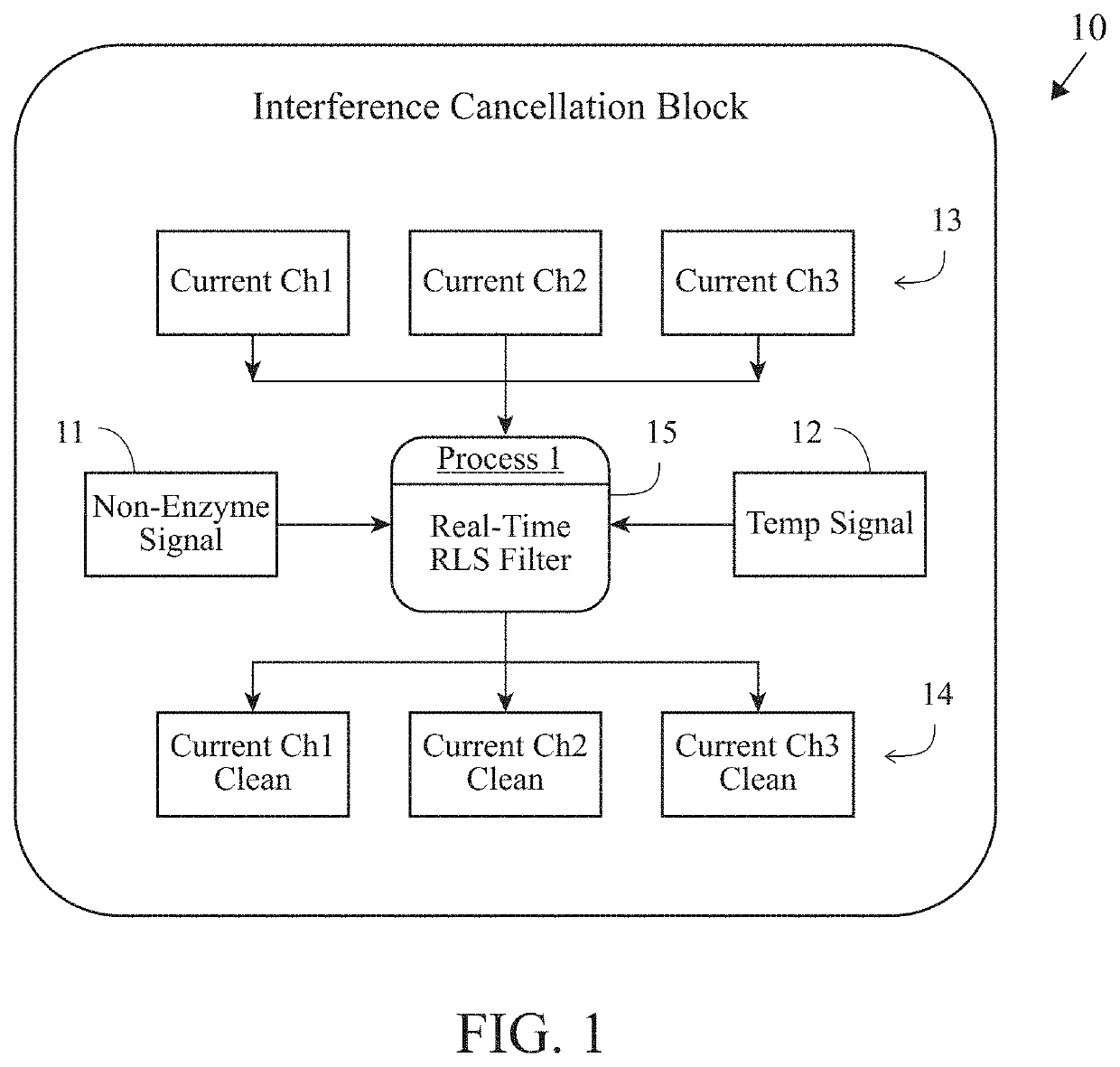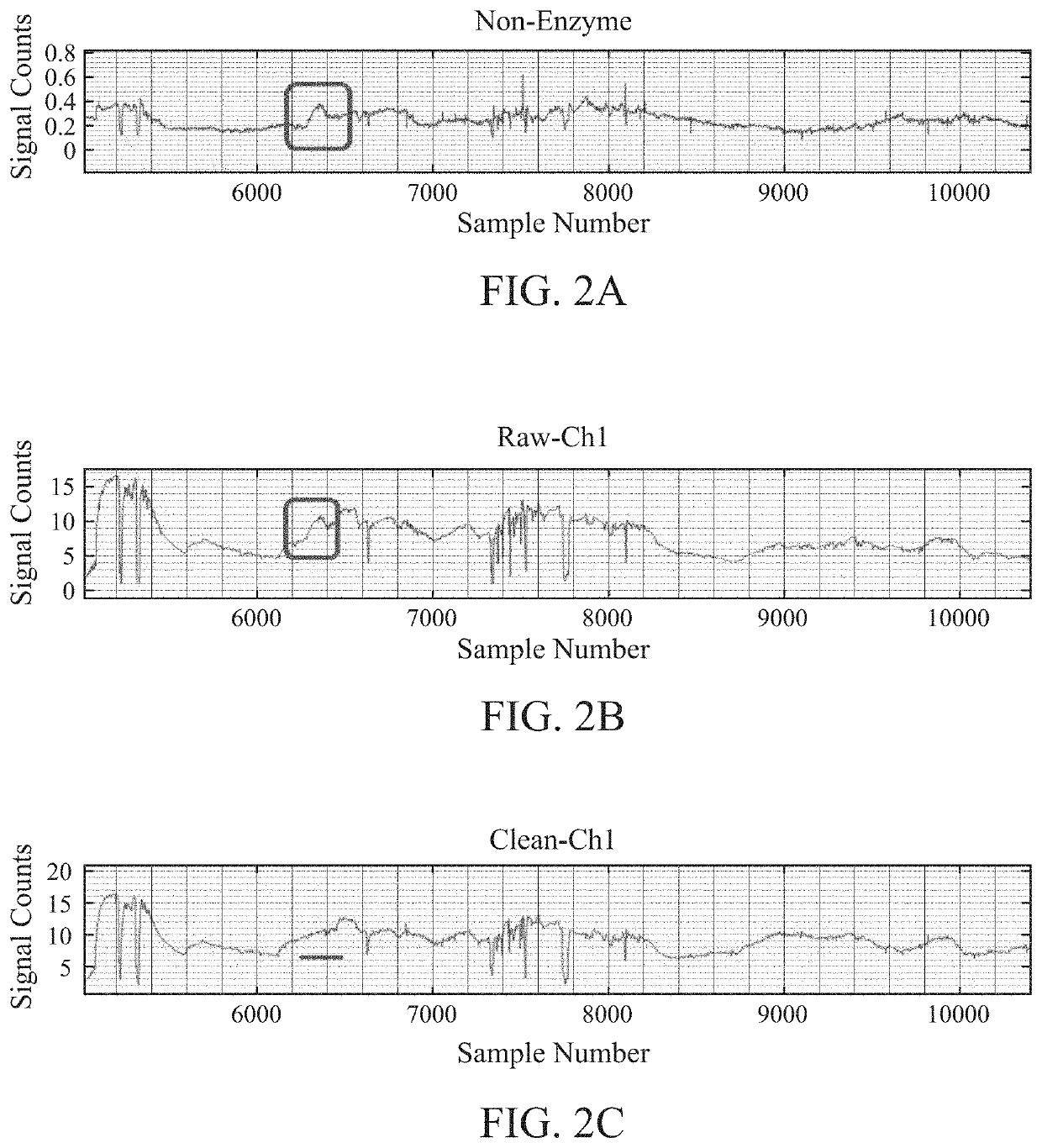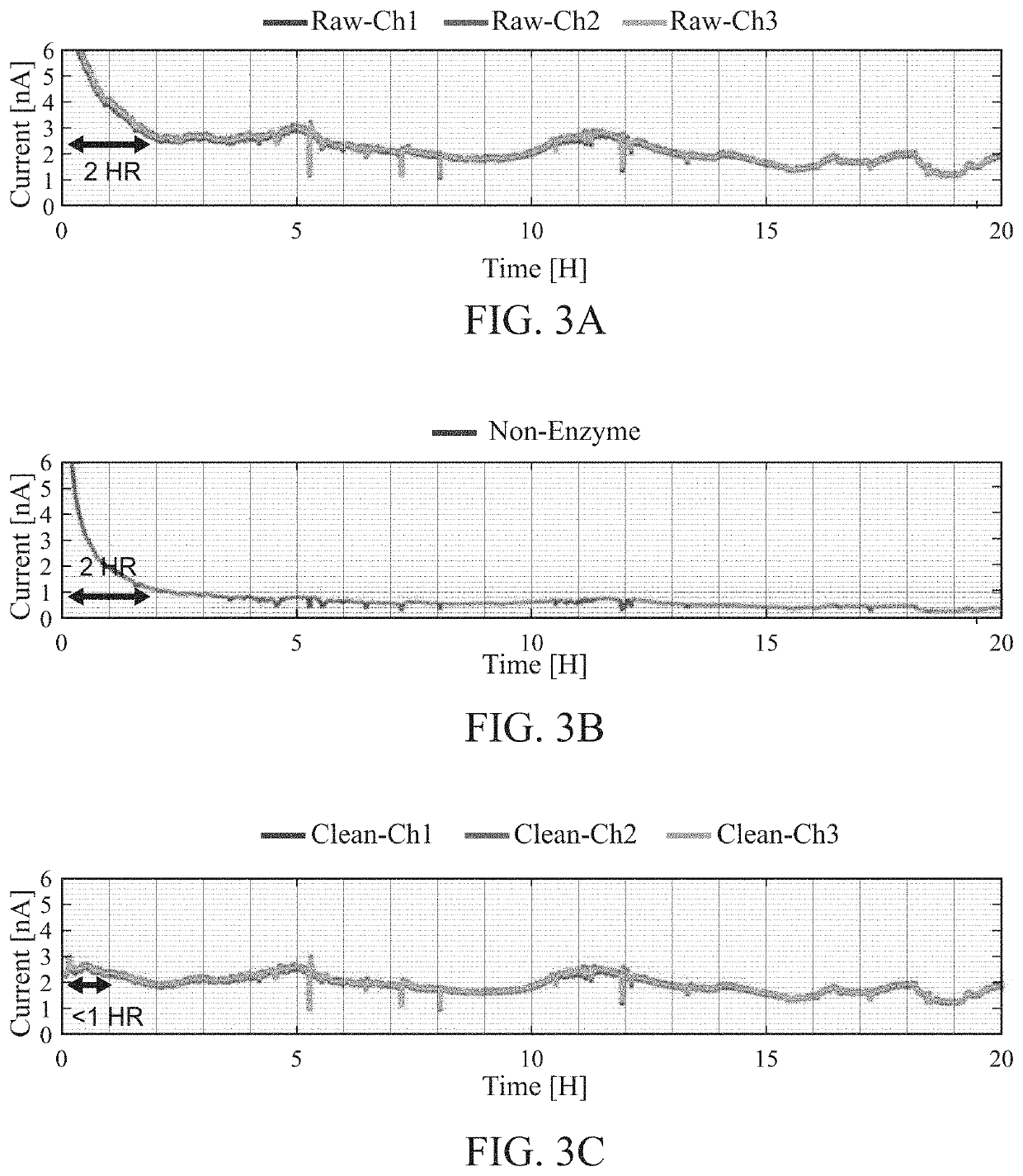Devices And Methods For The Mitigation Of Non-Analyte Signal Perturbations Incident Upon Analyte-Selective Sensor
a non-analyte signal and sensor technology, applied in the field of analyte-selective sensors, can solve problems such as corrupt measurement signals, and achieve the effects of minimizing measurement accuracy and reliability, improving analyte signal fidelity, and minimizing erroneous signals
- Summary
- Abstract
- Description
- Claims
- Application Information
AI Technical Summary
Benefits of technology
Problems solved by technology
Method used
Image
Examples
Embodiment Construction
[0100]Body-worn analyte-selective sensors, such as continuous glucose monitors, are sensitive electrochemical systems that are configured to sense an analyte, or plurality of analytes, in a selective fashion with a high-degree of accuracy. This accuracy can be unduly influenced by various external stimuli, which gives rise to undesired perturbations of the signal or signals transduced from said analyte-selective sensors, thereby introducing error in measurement and undermining the ultimate accuracy achievable with such devices. In this vein, even the most proficient analyte-selective sensors often succumb to the influence of external perturbations, which may be chemical, electrical, or mechanical in origin. The current innovation is aimed at mitigating the preponderance of undue physical, chemical, and otherwise exogenous influences upon the fidelity of the measurement of the target analyte or plurality of analytes. This is achieved via implementation of at least one of an analyte-s...
PUM
 Login to View More
Login to View More Abstract
Description
Claims
Application Information
 Login to View More
Login to View More - R&D
- Intellectual Property
- Life Sciences
- Materials
- Tech Scout
- Unparalleled Data Quality
- Higher Quality Content
- 60% Fewer Hallucinations
Browse by: Latest US Patents, China's latest patents, Technical Efficacy Thesaurus, Application Domain, Technology Topic, Popular Technical Reports.
© 2025 PatSnap. All rights reserved.Legal|Privacy policy|Modern Slavery Act Transparency Statement|Sitemap|About US| Contact US: help@patsnap.com



